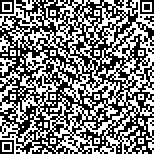解二康,从洋洋,王瑜元,等.基于下肢康复机器人的双任务训练对脑卒中患者下肢运动及步行能力的影响[J].中华物理医学与康复杂志,2024,46(2):112-117
扫码阅读全文

|
| 基于下肢康复机器人的双任务训练对脑卒中患者下肢运动及步行能力的影响 |
|
| |
| DOI:10.3760/cma.j.issn.0254-1424.2024.02.003 |
| 中文关键词: 脑卒中 机器人 双任务训练 近红外脑功能成像 步行能力 |
| 英文关键词: Stroke Robotics Dual-task training Functional near-infrared spectroscopy Walking ability |
| 基金项目:国家重点研发计划(2022YFC2009700,2022YFC2009706);国家自然科学基金青年项目(82102663) |
|
| 摘要点击次数: 3800 |
| 全文下载次数: 4637 |
| 中文摘要: |
| 目的 探讨下肢康复机器人辅助下的双任务训练对脑卒中患者下肢运动及步行能力的影响。 方法 将70例脑卒中患者按照随机数字表法分为对照组和试验组,每组35例。研究期间有9例患者脱落(因个人原因出院、转院),最终对照组30例、试验组31例患者完成了研究。两组患者均给予常规运动训练和物理因子治疗,对照组在此基础上增加认知-运动双任务训练,试验组增加下肢康复机器人辅助下的认知-运动双任务训练,每周5次,持续3周。干预前和干预3周后(干预后),采用Fugl-Meyer下肢运动功能评分(FMA-LE)、功能性步行量表(FAC)、数字广度测验(DST)、Berg平衡量表(BBS)、改良Barthel指数(MBI)对两组患者的下肢运动功能、步行能力、认知功能、平衡及日常生活能力进行评估。此外,本研究还从试验组中选出了6例右半球脑卒中患者,分别隔日进行认知-运动双任务训练和下肢康复机器人辅助下的认知-运动双任务训练,在干预前后采用近红外脑功能成像技术采集相关信号,进行静息态脑功能网络连接分析。 结果 两组患者干预后FMA-LE、FAC、BBS、MBI评分均较组内干预前改善,且试验组干预后FMA-LE[(27.71±6.00)分]、FAC[(3.74±1.03)分]、BBS[(48.39±7.90)分]、MBI评分[(86.68±11.60)分]显著高于对照组(P<0.05)。在认知功能评估方面,两组患者的DST顺背(DST-F)和倒背(DST-B)评分组内及组间比较,差异均无统计学意义(P>0.05)。基于近红外脑功能成像的脑网络功能连接分析结果显示,患者在下肢康复机器人辅助下的双任务训练中,左侧前额叶(PFC)与左侧运动前区-辅助运动区(PMC/SMA)间的功能连接强度增加(P<0.05)。 结论 下肢康复机器人辅助下的双任务训练可有效提高脑卒中患者的下肢运动功能及步行能力,改善平衡功能和日常生活能力,这种变化可能与下肢康复机器人引发的健侧半球PFC- PMC/SMA功能联系增强有关。 |
| 英文摘要: |
| Objective To explore the effects of dual task training assisted by a lower limb rehabilitation robot on lower extremity mobility and the walking ability of stroke survivors. Methods Sixty-one stroke survivors were randomly divided into a control group and an experimental group with 30 in the control group and 31 in the experimental group. In addition to routine exercise training and physical therapy, both groups were given cognitive-motor dual task training 5 times a week for 3 weeks. But only in the experimental group was the dual task training assisted by a lower limb rehabilitation robot. Both groups′ lower limb motor function, walking ability, cognition, balance and ability in the activities of daily living were evaluated before and after the experiment using the Fugl-Meyer lower extremity assessment (FMA-LE), functional ambulation categories (FAC), the digital span test (DST), the Berg Balance Scale (BBS) and the Modified Barthel Index (MBI). Additionally, 6 survivors of a right hemisphere stroke from the experimental group received cognitive-motor dual task training both with and without the robotic assistance alternately. Near-infrared functional brain imaging was applied before and after the intervention, and the functional network connectivity of the resting brains was analyzed. Results After the intervention the average FMA-LE, FAC, BBS and MBI scores had improved in both groups, with the improvement in the experimental group significantly better than in the control group on average. In terms of cognition there was no significant difference in the DST forward and backward assessment results between the two groups. The analysis of brain network functional connectivity showed that the intensity of functional connectivity between the left prefrontal cortex (PFC) and the left premotor cortex and supplementary motor cortex (PMC/SMA) increased significantly more, on average, after training assisted by the robot. Conclusion Dual task training with the assistance of a lower limb rehabilitation robot can effectively improve the lower limb motor function, walking, balance and ability in the activities of daily living of stroke survivors. Enhanced functional connection of the PFC and the PMC/SMA in the healthy hemisphere induced by the robot may be the cause. |
|
查看全文
查看/发表评论 下载PDF阅读器 |
| 关闭 |
|
|
|